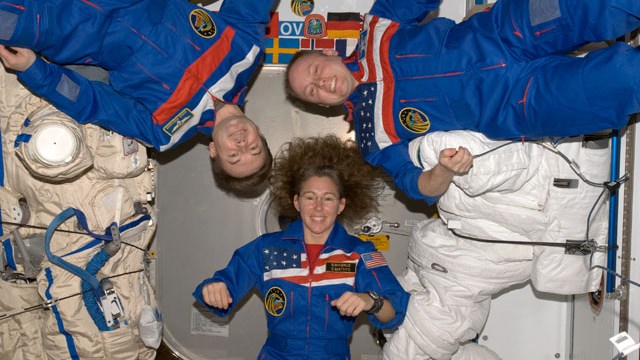The Multiverse: Reviving the Crazy Aunt of Quantum Theory

What is the idea of the multiverse? It gets back into the issue of what entails a measurement in a quantum mechanical system. Schrödinger himself actually disliked the idea that the Schrödinger Equation only told you the probability of finding where the electron might be at some point in space and time.
The equation does work very well for describing, for instance, radioactive isotopes decays. If I have a radioactive isotope and I say it has a half life of one year, what that means is that after a year, there’s a 50% chance that it decays or a 50% chance that it doesn’t decay. And if I have a million isotopes after a year, sure enough I’ll have half a million. However, I don’t know which half will have decayed until the year is up, but I can predict accurately that roughly half of them will go.
Schrödinger said, “Well what if I had not a million isotopes, but one isotope? Let’s say it has a half life of an hour. If it decays, it will emit an alpha particle, that particle will break open a bottle of poisoned gas and the poisoned gas can kill a cat that we put inside a box.” It’s not like we physicists hate cats, but you may argue that the process of observing the radioactive isotope changes whether it decays or doesn’t decay, but few people would say, looking at a cat, that changes whether it’s alive or dead. So it’s a way of amplifying a microscopic event to something macroscopic.
You put the cat in the box, you close the lid. After an hour, you open it up. Quantum mechanics says that there’s a 50% chance that the isotope has decayed in which case it has emitted a particle and the cat has died. But there is a 50% chance it doesn’t decay in which case we would find a live cat. Until you open the box, the only way to describe the cat is in an average of half alive and half dead. This sounds so stupid that we use different language.
In 1957, Hugh Everett III, in part of his PhD thesis at Princeton proposed an alternative explanation. He said there was not an average of half alive, half dead. No collapsing wave functions. What happened was when we closed up the box initially we split off two parallel universes. And at the end of the hour, the wave functions don’t collapse. We discover that we live in a universe where the cat lived or the universe where the cat died. And for every quantum event that has two outcomes, there’s at least that many universes. So there is in principle an infinite number of parallel universes.
Needless to say, physicists did not consider this helpful. And these ideas, which had been later on described by Brice DeWitt as the many worlds interpretation of quantum mechanics had been considered the crazy aunt of quantum theory and ignored up until fairly recently. But String Theorists and other physicists trying to develop a quantum theory of gravity have found that they needed to dust off the many worlds interpretation and apply it to their theories in order to make them work out.
In Their Own Words is recorded in Big Think’s studio.
Image courtesy of Shutterstock





